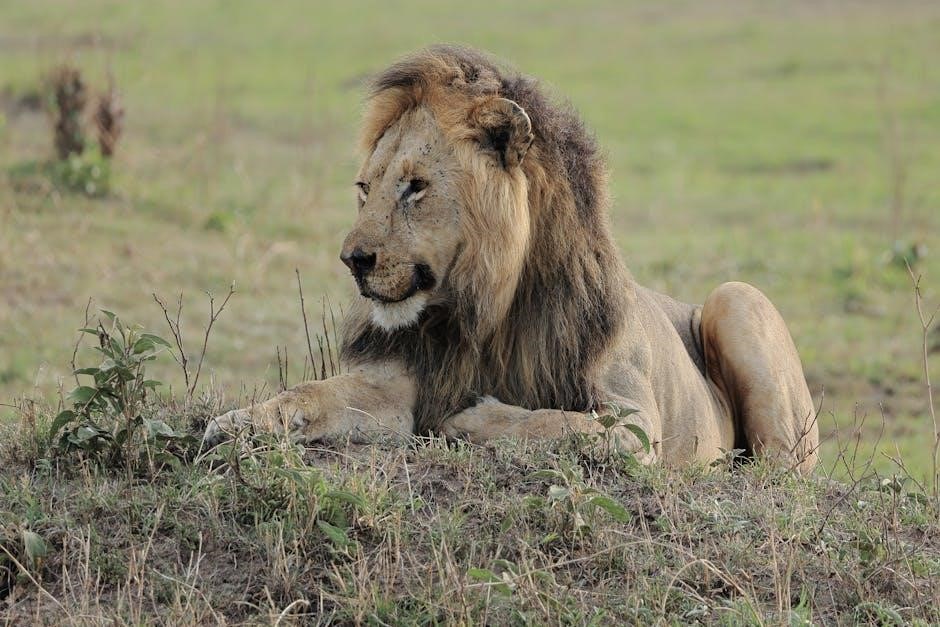Disney’s The Lion King JR. is a captivating Broadway Junior musical adaptation of the beloved film, exploring themes of responsibility, destiny, and the circle of life. Perfect for young performers, it offers a magical experience for schools and educators.
1.1 Overview of The Lion King JR. Musical
The Lion King JR. is a condensed adaptation of Disney’s iconic Broadway musical, tailored for young performers. It retains the essence of the original story, following Simba’s journey from cub to king. The musical is divided into 13 scenes, featuring memorable songs like Circle of Life and Hakuna Matata. Designed for schools and youth theaters, it offers a simplified yet impactful production, making it accessible for educators and students. The script PDF provides a comprehensive guide, including dialogue, stage directions, and music cues, ensuring a magical and educational experience for participants and audiences alike.
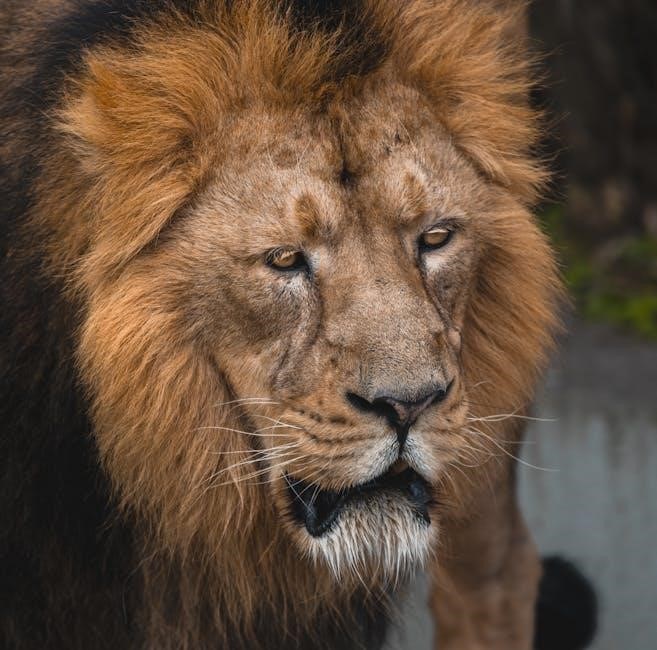
1.2 Importance of The Lion King JR. Script PDF
The Lion King JR. Script PDF is a vital resource for schools and youth theaters, providing a detailed guide for staging the musical. It includes dialogue, stage directions, and song cues, ensuring a smooth production process. The script is tailored for young performers, offering a manageable yet impactful experience. Its accessibility makes it ideal for educators to integrate into curricula, promoting creativity and teamwork. Additionally, the PDF format allows easy distribution and reference, making it an essential tool for both rehearsals and performances, fostering a magical and educational experience for participants and audiences alike.
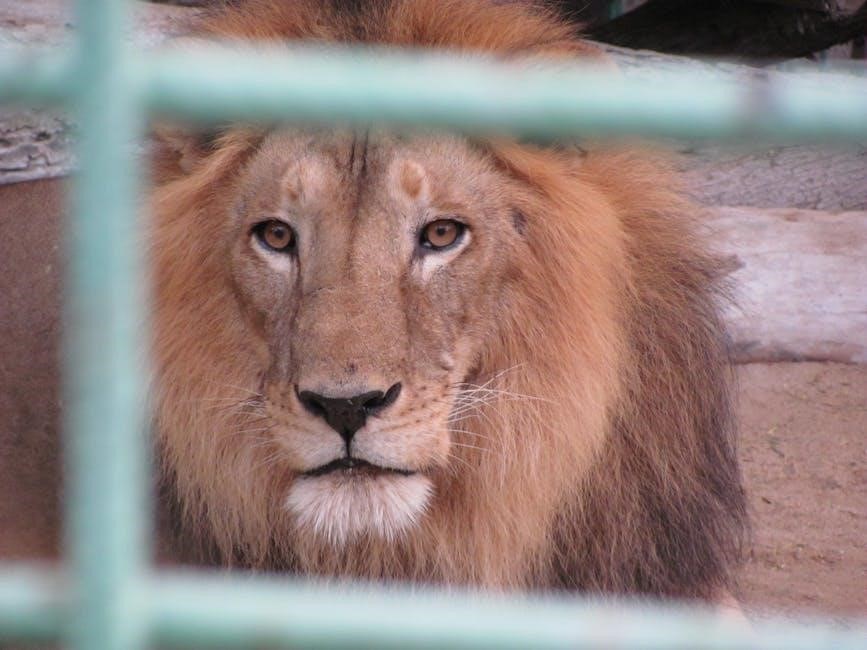
Structure of The Lion King JR. Script
The Lion King JR. script is divided into 13 scenes and two acts, opening with the iconic “Circle of Life” and tracing Simba’s journey from cub to king.
2.1 Scene Breakdown
The Lion King JR. script is structured into 13 scenes, each advancing Simba’s journey. Act 1 opens with Rafiki introducing newborn Simba at Pride Rock in “Circle of Life.” Subsequent scenes explore Simba’s childhood, Mufasa’s teachings, and Scar’s treacherous plot. Act 2 follows Simba’s exile, his friendship with Timon and Pumbaa, and his eventual return to reclaim his kingdom. Each scene seamlessly transitions, maintaining the musical’s dramatic and emotional flow, culminating in Simba’s ascension as king.
2.2 Key Songs and Dialogues
The Lion King JR. script features iconic songs like “Circle of Life” and “Hakuna Matata” that drive the story and define its emotional core. Dialogues between characters such as Mufasa and Simba highlight themes of responsibility and identity. Key moments include Simba’s “I Just Can’t Wait to Be King” and Scar’s manipulative monologues, showcasing his cunning nature. The script balances powerful musical numbers with poignant conversations, creating a dynamic narrative that captivates audiences of all ages.
2.3 Character Development
The Lion King JR. script emphasizes strong character development, with Simba evolving from a naive cub to a courageous king. Mufasa’s wisdom and Scar’s manipulation shape Simba’s journey, while Rafiki’s guidance helps him reclaim his destiny. Nala’s unwavering loyalty and growth into a strong leader complement Simba’s transformation. Each character’s arc is defined through dialogue, songs, and interactions, making the story relatable and engaging for young audiences. The script ensures that each character’s personality and growth are clearly portrayed, creating a compelling narrative that explores themes of identity, responsibility, and friendship.
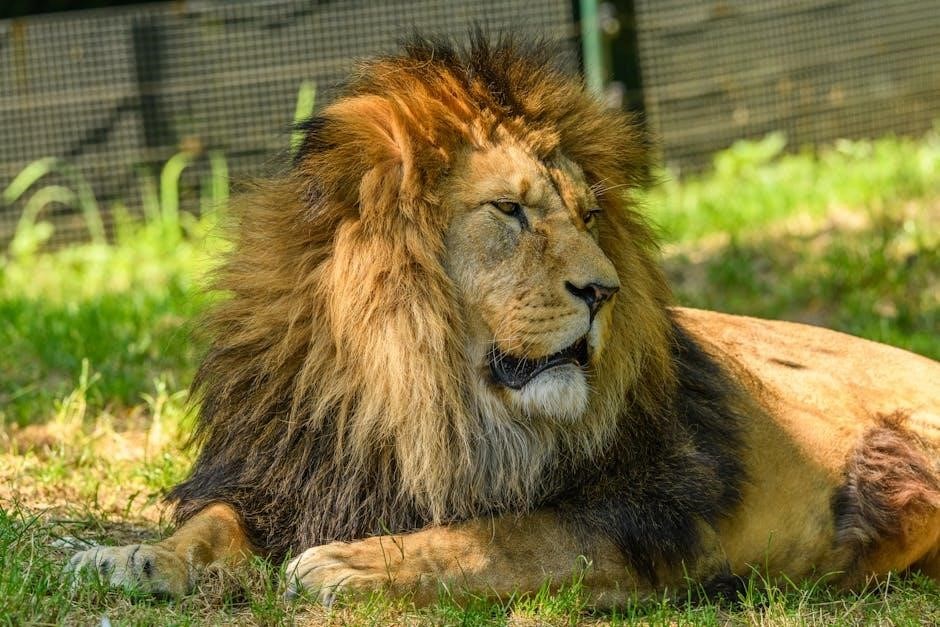
Key Scenes in The Lion King JR.
The Lion King JR. features iconic scenes like the “Circle of Life,” Simba’s childhood, Scar’s treacherous plot, Simba’s exile, and his triumphant return as king. These moments captivate audiences with emotional depth and stunning visuals, making the story unforgettable.
3.1 Circle of Life
The “Circle of Life” is the opening scene of The Lion King JR., setting the tone with Rafiki’s powerful call to the animals. It introduces Pride Rock and the newborn Simba, symbolizing hope and continuity. Mufasa and Sarabi present their cub, while Rafiki performs a blessing. This scene emphasizes themes of legacy and responsibility, with the iconic song stirring emotions and visually showcasing the African savanna’s vibrancy. It’s a pivotal moment that draws the audience into Simba’s journey and the kingdom’s destiny, making it a memorable and impactful start to the musical.
3.2 Simba’s Childhood
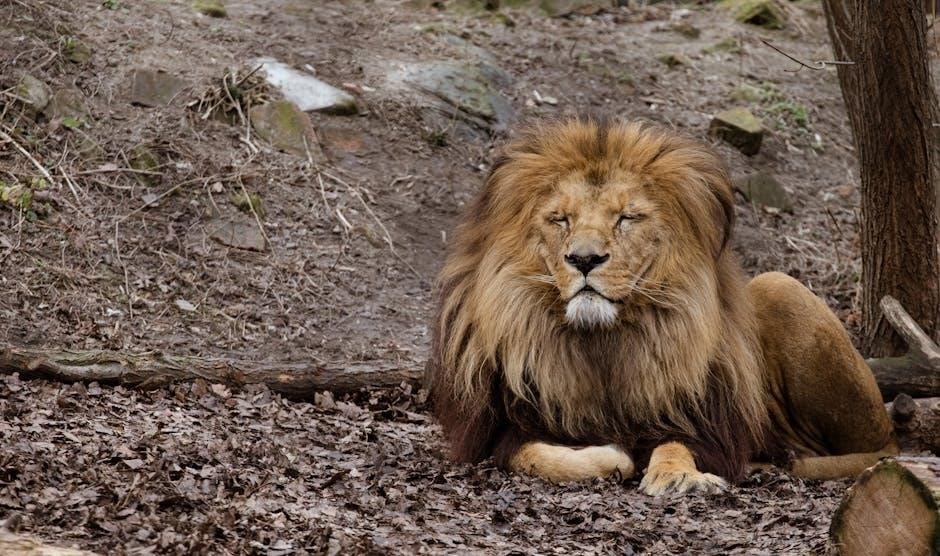
Simba’s childhood is a heartwarming and transformative chapter in The Lion King JR.. As a young cub, Simba is curious, adventurous, and playful, forming strong bonds with Mufasa and Nala. Mufasa teaches Simba about responsibility and the circle of life, while Nala encourages his sense of adventure. This period highlights Simba’s innocence and growth, showcasing his journey from a carefree cub to a prince grappling with destiny. The interactions between Simba and his father are particularly poignant, laying the foundation for his character development. This phase contrasts sharply with the challenges he later faces, emphasizing his vulnerability and youthful spirit.
3.3 Scar’s Plot
Scar’s plot is the driving force of conflict in The Lion King JR.. Driven by jealousy and ambition, Scar devises a plan to overthrow Mufasa and claim the throne. His manipulative nature is evident as he orchestrates a tragic event involving a stampede, leading to Mufasa’s death. Scar’s cunning and deceit manipulate Simba, making him believe he is responsible for the tragedy. This plot twist not only solidifies Scar’s rule but also sets Simba on a path of exile and self-discovery. Scar’s actions highlight his ruthless pursuit of power and his role as the primary antagonist, shaping the story’s dramatic tension and Simba’s journey. His schemes are central to the narrative, showcasing his intelligence and ruthlessness. Scar’s plot underscores the themes of betrayal and ambition, making him one of the most compelling villains in the story. His manipulative tactics and hidden agenda drive the story forward, creating a complex web of deceit and tragedy.
3.4 Simba’s Exile
Simba’s exile marks a pivotal moment in The Lion King JR., as he flees the Pride Lands, consumed by guilt and fear. Scar’s manipulation leads Simba to believe he is responsible for Mufasa’s death, prompting his departure. In exile, Simba encounters Timon and Pumbaa, who teach him the carefree “Hakuna Matata” lifestyle, shielding him from his past. This period of self-imposed exile allows Simba to grow and confront his destiny, ultimately preparing him to reclaim his rightful place as king. The exile highlights Simba’s journey of self-discovery and the emotional struggles he faces, shaping his character development and the story’s progression.
3.5 Return of the King
The climax of The Lion King JR. unfolds as Simba returns to the Pride Lands, marking his transformation from a hesitant exile to a confident leader. Guided by Rafiki and haunted by Mufasa’s ghost, Simba confronts Scar, exposing his treachery and reclaiming his throne. The “Return of the King” signifies the restoration of justice and balance, as Simba assumes his rightful place, embracing his destiny. This scene is emotionally charged, showcasing Simba’s growth and the triumph of righteousness over deceit, culminating in a powerful resolution that unites the Pride Lands under Simba’s wise rule. The circle of life is fulfilled as Simba becomes king.
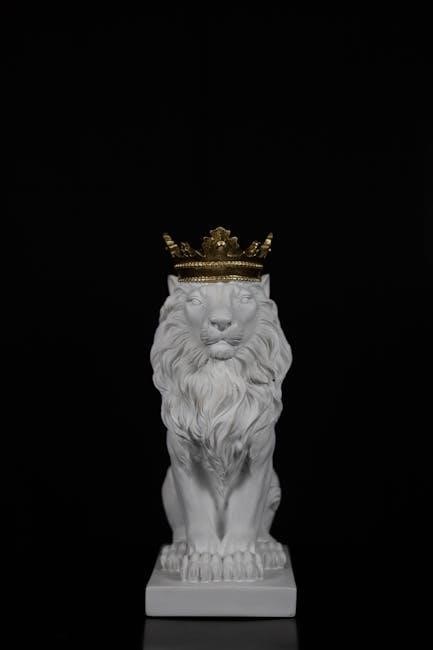
Characters in The Lion King JR.
The story features iconic characters like Simba, Mufasa, Scar, Rafiki, and Nala, each with distinct personalities and roles that drive the narrative forward, showcasing themes of courage, betrayal, and redemption.
4.1 Simba
Simba is the heart of The Lion King JR., evolving from a curious cub to a brave king. His journey explores themes of identity, courage, and responsibility. As Mufasa’s son, he faces the challenges of leadership and betrayal by Scar. Simba’s exile and return highlight his growth, ultimately embracing his destiny to reclaim Pride Rock. The script portrays his transformation through key dialogues and songs, making him a relatable and inspiring character for young actors and audiences alike. His story teaches valuable life lessons about perseverance and understanding one’s place in the world.
4.2 Mufasa
Mufasa is the wise and powerful king of the Pride Lands, embodying strength, wisdom, and justice. As Simba’s father, he teaches the young prince about responsibility and the circle of life. His authoritative presence and deep voice command respect, while his love for Simba shows a compassionate side. Mufasa’s tragic death at Scar’s hands is a pivotal moment in the story, leaving a lasting impact on Simba and the kingdom. The script portrays Mufasa as a symbol of leadership and integrity, with his legacy guiding Simba’s journey to reclaim his rightful place as king. His influence remains central to the story’s themes.
4.3 Scar
Scar is Mufasa’s manipulative and power-hungry brother, driven by jealousy and a desire to rule the Pride Lands. His cunning nature and smooth dialogue make him a compelling antagonist. Scar orchestrates Mufasa’s downfall and convinces Simba of his guilt, leading to Simba’s exile. Despite his sinister actions, Scar’s charisma and wit add depth to his character. The script highlights his manipulative tactics and the emotional impact of his betrayal on Simba and the kingdom. Scar’s ambition and greed serve as a cautionary tale, making him one of the most memorable Disney villains in the Lion King JR. adaptation. His presence shapes the story’s conflict and resolution.
4.4 Rafiki
Rafiki is a wise and aged mandrill who serves as a spiritual advisor and close friend to Mufasa and Sarabi. He is known for his deep understanding of the Circle of Life and his role in presenting newborn Simba to the Pride Lands. Rafiki’s wisdom and kindness make him a trusted mentor to Simba, helping him reclaim his rightful place as king. The script highlights Rafiki’s pivotal moments, such as performing the ceremony for Simba’s presentation and later encouraging Simba to embrace his destiny. His interactions with Simba and other characters showcase his importance as a guide and a symbol of hope in the story. Rafiki’s presence adds depth and spiritual insight to the narrative, making him a beloved character in The Lion King JR. production. His wisdom and loyalty are central to the story’s resolution and Simba’s journey. Rafiki’s role emphasizes the value of mentorship and tradition in the Pride Lands. His character is both memorable and inspiring, offering key lessons that resonate throughout the musical. Rafiki’s scenes are filled with warmth and significance, making him a fan favorite.
4.5 Nala
Nala is Simba’s fearless and loyal best friend, who later becomes his queen. Her strength and bravery make her a key character in the story. Nala’s unwavering dedication to Simba and the Pride Lands drives her to confront Scar and encourage Simba to reclaim his rightful place as king. In the Lion King JR. script, Nala’s character evolves from a playful cub to a determined young lioness, showcasing her growth and resilience. Her interactions with Simba highlight themes of friendship, loyalty, and courage. Nala’s role is crucial in guiding Simba back to his destiny, making her a vital and inspiring figure in the musical. Her strength and compassion are central to the story’s resolution and the restoration of peace in the Pride Lands. Nala’s character serves as a powerful example of leadership and loyalty, making her a fan-favorite role in productions of The Lion King JR.
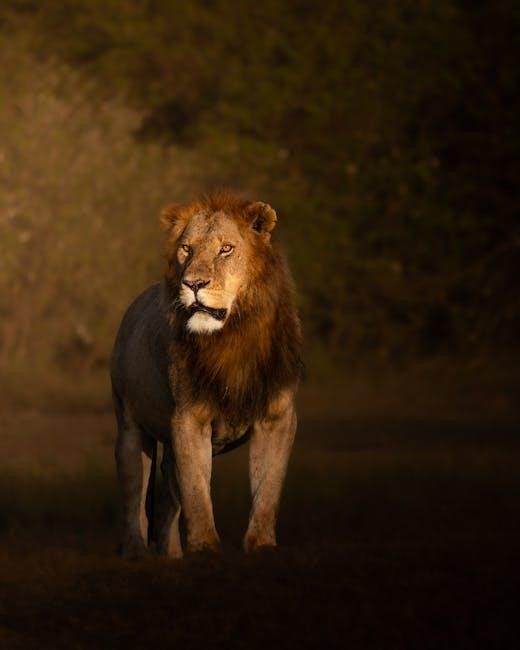
Production Tips for The Lion King JR.
Creating a stunning production of The Lion King JR. requires attention to detail in costumes, set design, and choreography. Encourage creativity and authenticity to bring the African savanna to life, ensuring a memorable experience for both performers and audiences.
5.1 Costumes and Makeup
Costumes and makeup are crucial for bringing The Lion King JR. to life. Use earthy tones and animal-inspired designs to reflect the African savanna. For characters like Simba and Mufasa, incorporate golden hues and regal patterns. Scar should have darker, more sinister elements. Face paint and prosthetics can help create distinct animal features, while props like headpieces and tails add authenticity. Consider the age and skill level of performers when designing costumes, ensuring they are comfortable and allow for movement. Simple yet creative designs can effectively transform young actors into their characters, enhancing the storytelling experience for the audience.
5.2 Set Design
The set design for The Lion King JR. should transport the audience to the African savanna. A central Pride Rock structure is essential, symbolizing the heart of the kingdom. Use warm, earthy tones and natural elements like trees and grasslands to create an immersive backdrop. Lighting plays a key role in setting the mood, from the golden hues of sunrise to the dramatic shadows of Scar’s lair. Ensure the set is flexible to accommodate scene changes and movement. Projections or painted murals can enhance the environment without complicating the setup. The design should inspire young performers and engage the audience visually.
5.3 Choreography
The choreography for The Lion King JR. should reflect the energy and grace of African-inspired movements. Incorporate fluid, organic gestures that mimic animal behaviors, such as the rhythmic stomping of wildebeests or the regal struts of lions. Use group formations to create visually striking patterns, enhancing the storytelling. Simple yet impactful routines can engage young performers while conveying the emotional depth of scenes. Ensure choreography is age-appropriate, focusing on teamwork and coordination. Highlight key songs like “Circle of Life” and “Hakuna Matata” with dynamic, layered movements that captivate the audience and bring the Pride Lands to life on stage.
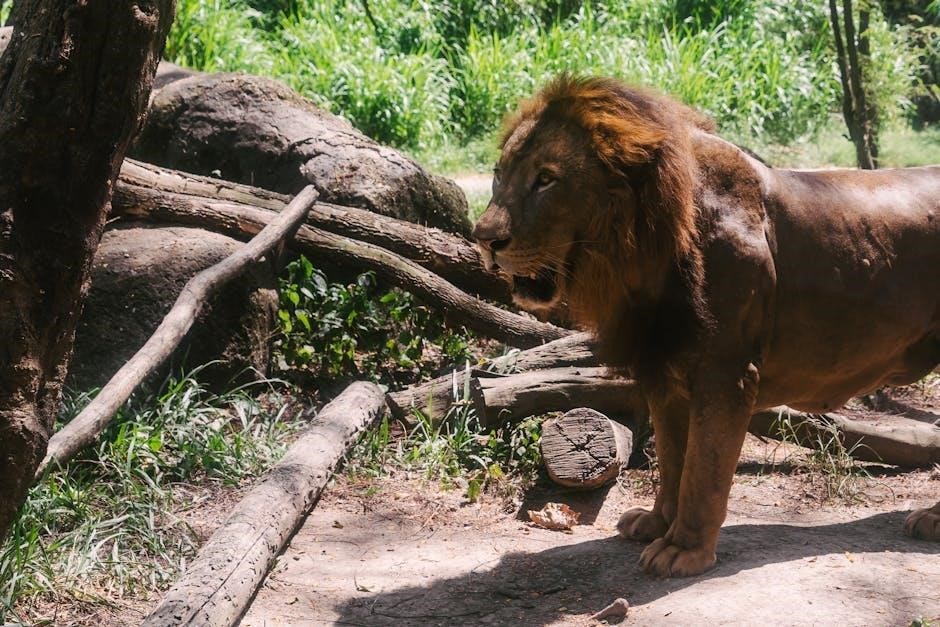
Educational Value of The Lion King JR.
The Lion King JR. enhances learning through storytelling, promoting teamwork, creativity, and emotional intelligence. It integrates curriculum themes like responsibility and heritage, enriching students’ theatrical and life skills.
6.1 Curriculum Integration
The Lion King JR. seamlessly integrates into school curricula, offering opportunities to link drama, music, and literature. Educators can align the script with lessons on storytelling, cultural studies, and character analysis. The musical’s themes of responsibility, leadership, and community resonate across subjects, making it a versatile tool for interdisciplinary learning. Students can explore African culture through costumes and set design, while language arts classes can analyze the script’s dialogue and themes. This holistic approach enriches students’ understanding and fosters a deeper connection to the material, making learning engaging and meaningful.
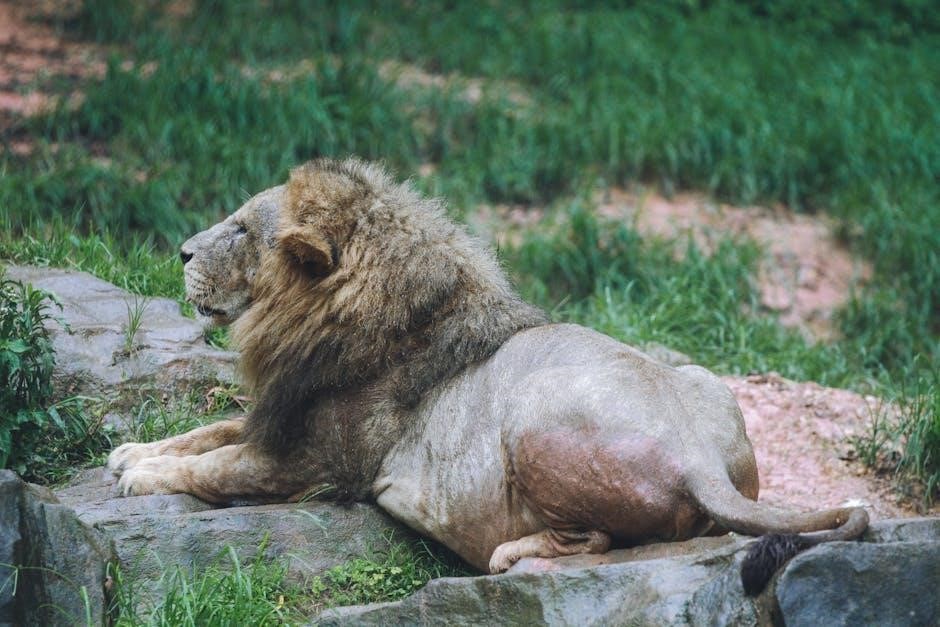
6.2 Skills Development
Producing The Lion King JR. fosters a range of skills in students, including teamwork, creativity, and problem-solving. Participants develop confidence through public speaking and performing, while learning to collaborate on costumes, sets, and choreography. The script encourages emotional intelligence by exploring themes like responsibility and empathy. Students also gain technical skills in stage management and lighting, preparing them for future creative endeavors. This hands-on experience nurtures leadership as students take on roles like directors or crew members. The musical becomes a transformative learning tool, blending art and education to help students grow both personally and professionally.
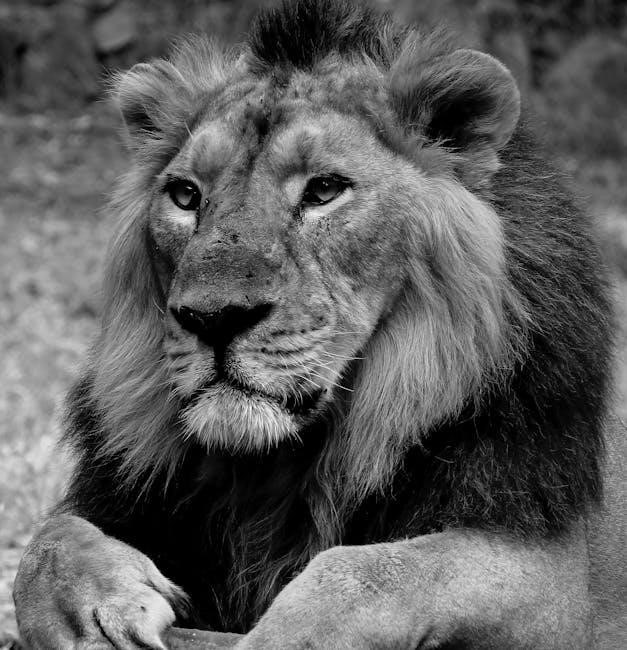
The Lion King JR. script PDF remains a timeless educational resource, inspiring creativity and learning through its captivating story and universal themes, ideal for schools and young performers.
7.1 Final Thoughts
The Lion King JR. script PDF is a valuable resource for educators and performers, offering a rich story of growth, responsibility, and destiny. Its universal themes resonate deeply, making it a timeless choice for schools and theaters. The script adapts the beloved Disney classic into a manageable format for young actors, fostering creativity and teamwork. With its iconic songs and memorable characters, it provides a unique opportunity to explore complex emotions and moral lessons. As a teaching tool, it enhances curriculum integration and skills development, leaving a lasting impact on both participants and audiences. A truly unforgettable theatrical experience.
